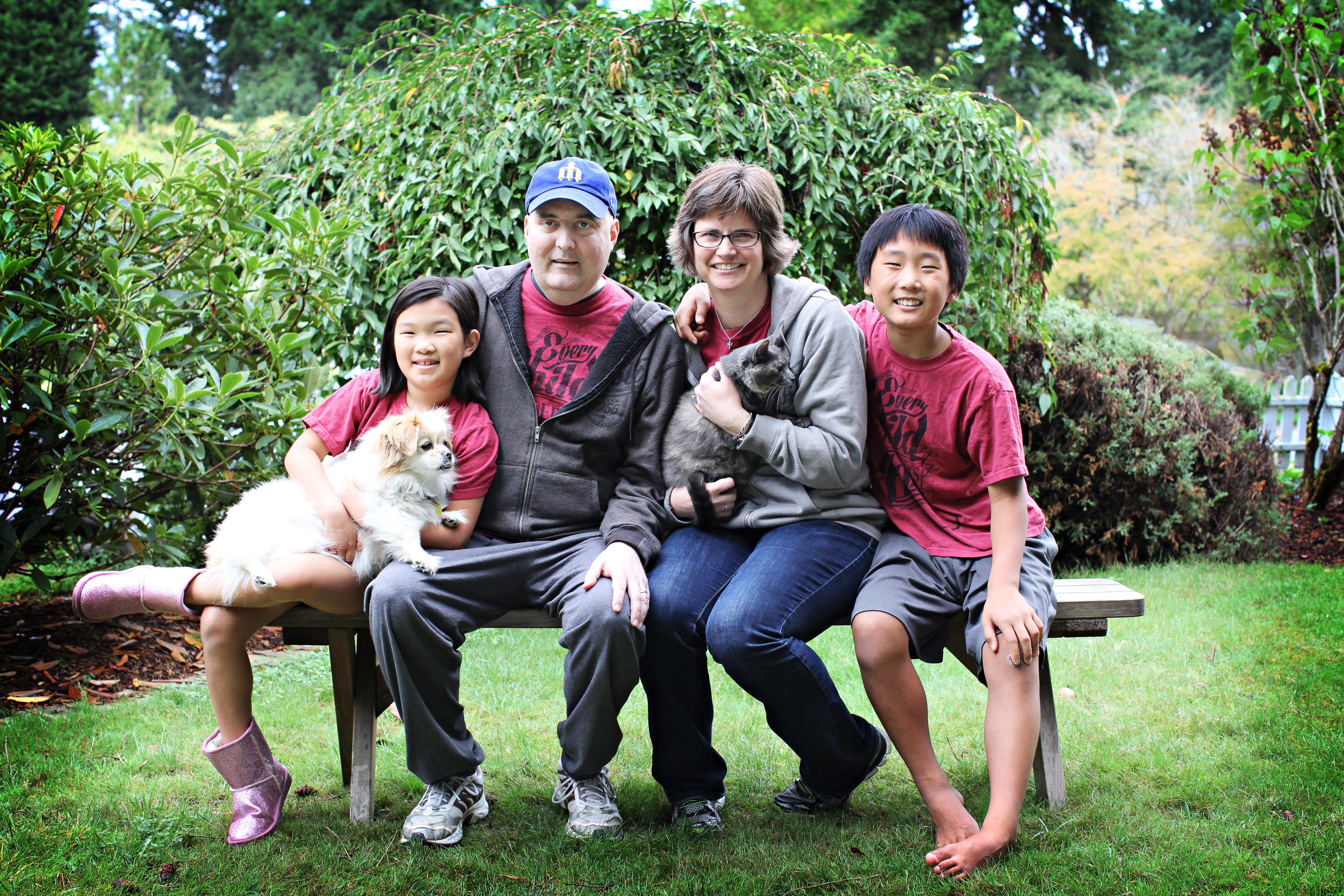“I need to figure out how to build a web site, because it will help Megan with her grief.”
This was the thought running through my head as I pondered how and where to create a simple web site to sell notecards with my 10-year-old’s artwork. She and I had started a social microbusiness to raise money for brain cancer research; she was handling creative and I was handling the business side of things.
You see, I had lost my 44-year-old husband, Dennis, to brain cancer a year earlier. It’s a devastating disease that has claimed the lives of John McCain, Beau Biden, Ted Kennedy, and so many more.
A year out, I was struggling with direction. What should I do with my life? Being a young widow – and a solo parent – was certainly not what I had signed up for. Still, I couldn’t change what had happened. I was determined to thrive – not just survive – for my remaining decades.
I was also having trouble focusing. Attempts to work – not ten feet from my husband’s urn and the surrounding family photos – were met with flashbacks of ER visits, surgery waiting rooms, and his time on hospice. I needed something to grab onto, something that would let me claw my way back to the present day and to my new reality.
Enter Megan’s Cards for Cancer. It was surprisingly useful for me to have tangible, concrete tasks to focus on. Tasks that were a bit of a stretch – and that required focus – but not so much of a stretch that they were insurmountable. And, importantly, tasks that would help not just me, but my daughter. As a parent, that motivation to focus so I could help Megan – in addition to myself — gave me that extra push I needed to get it done.
Now that Megan’s Cards for Cancer has raised nearly $6,000 for brain cancer research at the Ben and Catherine Ivy Center for Advanced Brain Tumor Treatment in Seattle, what I’ve learned is this: turning grief into action can be a fantastic grief recovery tool. As Adam Grant said, “When you lose someone who is very close to you, you can do good in that person’s name and it becomes an extension of their life. It becomes part of their legacy.”
It turns out that regaining my ability to focus has netted me a new sense of direction, too. It’s been three years now that I’ve been picking up the pieces and, for me, the widowed parenting aspect – also called “solo parenting” or “only parenting” – has been hardest.
Because here’s the thing: even if your kid goes to a therapist weekly, a peer grief group monthly, and a grief camp for a few days in the summer – which would be a lot of grief work, really – that still leave 300-ish days in the year where it’s all on you to handle things. And it’s not like you can push the pause button on parenting while you try to figure out what to do. You’ve got to keep going, every day, and figure it out as you go along.
And so, when I first became a widowed parent, I went looking for the book that would tell me what to do. And I found that it doesn’t exist. So, I decided to go out and put together the pieces of this puzzle. And — most importantly – to share what I was learning with other widowed parents.
Last November, during Children’s Grief Awareness Month, I launched The Widowed Parent Podcast. I talk to people who have been down this path. People who write books and who practice in the field. I interview them for the podcast — and bring listeners the best advice and information I can find. They can listen in right from their phone as they go about their day. Or even on Alexa as they fix dinner.
Hosting the podcast has been incredibly rewarding for me. I’ve learned so much about widowed parenting, and about myself. And I’ve heard from fellow widowed parents that they have, too. In fact, this is the listener feedback that I’m most proud of:
“I’ve listened to all of them and look forward to it each week. It’s real and relevant intermixed with a sense of hope for the future.”
Real. Relevant. A sense of hope. That’s exactly what I’m going for.
And it’s exactly what I learned when my husband died, and I became someone who turns grief into action.


